
Stores far and wide sell tempered glass dishes for baking and cooking – many marketed precisely for this purpose – and yet many cooks still wonder, “Are glass dishes safe?” There is no doubt that a shiny, metal pan is the instrument of choice for baking a cake because it will reflect heat from the cake to produce a light brown crust. By contrast, glass looks great and is convenient, even though it heats faster and retains heat longer. So what to do? Cook your cake in a glass dish with confidence by practicing good kitchen sense, just as you do with all the other tools and instruments in your kitchen.
Glass Dish Know-How
Step 1
Read the manufacturer's guidelines and instructions for your glass dish. Ensure that the dish is intended for oven use. Check to see if there are any restrictions on heat. For example, a manufacturer might say that his product should not be heated above 450 degrees Fahrenheit. Take nothing for granted. A sturdy-looking glass dish might not be suitable for prolonged oven heat. If the instructions aren’t clear and precise, call the manufacturer for guidance.
Step 2
Reduce the temperature on your oven by 25 F when following a cake recipe and using a glass dish. The lower temperature will counteract the fact that glass causes cakes to brown and bake faster.
Step 3
Remove the cake from the oven and place it on a cooling rack, warming pad or trivet – never on a cool surface or even a damp towel. An abrupt temperature change – known as thermal shock – could cause the glass to shatter.
Let Your Cake Rise to Success
Step 1
Follow the directions regarding how to beat your cake batter. Under- and over-beating will affect both the volume and texture of your cake.
Step 2
Ensure that you fully preheat your oven before putting your cake inside. Most ovens need between 10 and 15 minutes to reach the desired temperature.
Step 3
Place your glass dish in the center of the oven, unless the recipe says otherwise. In general, cakes are done when a toothpick inserted in the middle of the cake leaves no crumbs or batter on the toothpick.
Related Articles
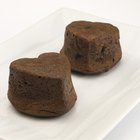
What Is a Souffle Dish?
How to Lower Cooking Times & ...

Can I Make a Cake Mix in a Ceramic Dish?

How to Freeze Cakes Before Frosting

Can You Cook Frozen Dinners in Glass?
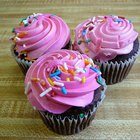
How to Adjust the Oven Temperature for ...
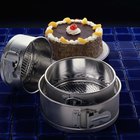
How to Keep Cake Edges From Hardening ...

How to Cook a Rib Eye Steak in a Glass ...

How to Bake a Really Moist Boxed Cake

How to Steam Cook a Cake

How to Bake a Cake: A Step-By-Step Guide

How to Keep a Wedding Cake with ...
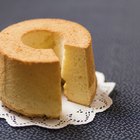
How to Keep Chiffon Cake From Shrinking

How to Keep Frosting Moist

How to Make a Two-Layered Birthday Cake ...

How to Make Waffles With Cake Mix

How to Bake With a Pressure Cooker

Toaster Oven Cooking Times

Can You Cook Pudding in the Oven?
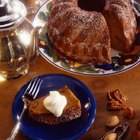
How to Convert a Pan Cake to a Bundt ...
References
- Betty Crocker: Cake Making 101
- Duncan Hines: Baking with Glass Baking Dishes
- Recipe Tips: Types of Bakeware
- Chicago Tribune: Safety Reminders for Using Glass Bakeware
- Pillsbury: Secrets to Successful Cakes
- The Baking Pan: Cake Hints and Tips
- Pyrex: Is It All Right to Use My Vintage Pyrex in the Oven?
Warnings
- Never place glass bakeware over a flame, in your broiler or in a toaster oven.
Writer Bio
Mary Wroblewski earned a master'sdegree with high honors in communications and has worked as areporter and editor in two Chicago newsrooms. She launched her ownsmall business, which specialized in assisting small business ownerswith “all things marketing” – from drafting a marketing planand writing website copy to crafting media plans and developing emailcampaigns. Mary writes extensively about small business issues, andespecially “all things marketing.”
Photo Credits
NA/PhotoObjects.net/Getty Images